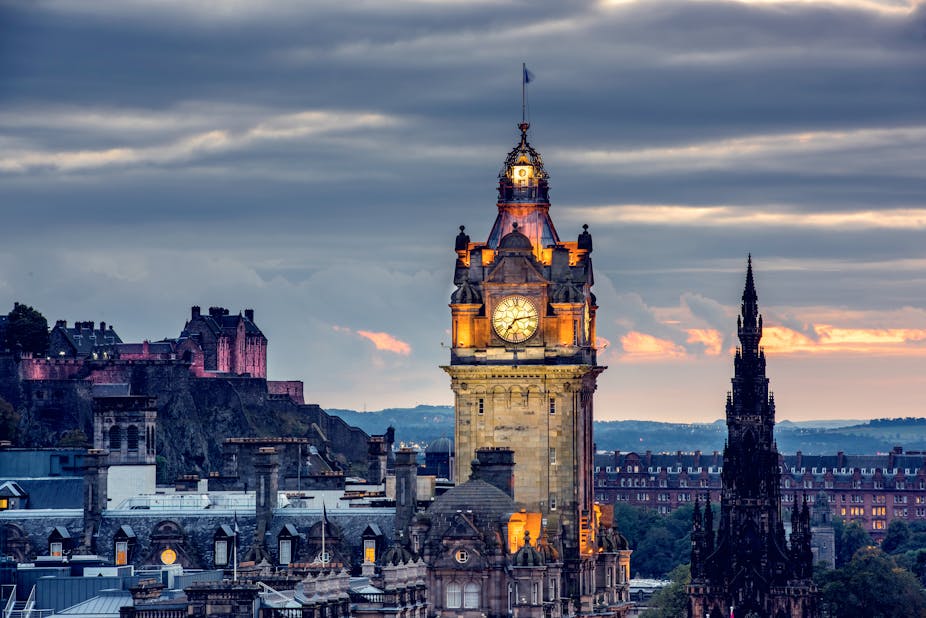One of the most oft-quoted comments from the Scottish independence referendum was then SNP leader and first minister Alex Salmond’s claim that the result would “settle the matter for at least a generation”. While this is now used by independence opponents to resist calls for a second referendum, there is general agreement that 2014 settled absolutely nothing. That there was a 55%-45% No vote almost seems lost in the mists of political history.
The referendum reflected a period of significant political change in Scotland, not least the rise of the SNP and independence support against a Labour party that had largely dominated Scottish politics for 50 to 60 years. Yet the changes since September 18 2014 have been even more far-reaching. When they work themselves out, they will shape the future direction of politics not only in Scotland but across the UK.
Writing this in Scotland, it feels a very different place. It is at times hard to express in words, but the “indyref” has brought forth a renewed interest in politics, often expressed as anti-Westminster. It has mobilised continuing support for independence in the form of a broad social movement that includes the young, disadvantaged, activists and campaigners.
The constitutional uncertainty has been exacerbated by David Cameron’s announcements in the morning following the referendum and more recently as prime minister about devolution for England – and that now well worn phrase EVEL: English votes for English laws.
The more England is recognised as a nation in its own right, the more it risks loosening the already fraught ties that bind the UK and play directly into the hands of the SNP. Gordon Brown has repeatedly attacked the Conservatives for the “damage” that they are doing to the union.

May 2015 and all that
The fact that the independence movement emerged as the strongest political force propelled the SNP to its stunning victory at the UK election in May. In what has been referred to as a “tartan tsunami”, it took took 56 of the 59 seats in Scotland. Labour was reduced from the 41 seats it held in the 2010 election to only one – in the somewhat non-traditional Labour area of Edinburgh South.
Looking ahead to the May 2016 Scottish elections, already polls are projecting another SNP landslide with between 50% and 60% of the vote.
Such a result would complete a Labour demise in Scotland that has been in the making for a considerable time. As the primary defender of the union in Scotland – arguably Wales and England too – Labour has been in the unenviable position of defending what for growing numbers in Scotland is the UK establishment. The party stands accused of both broadly supporting Tory/coalition austerity under Ed Miliband and having “jumped into bed” in defending the union with a party that has remained toxic north of the border since Thatcher. The political price has been exorbitant.

Anti-independence politicians sometimes say that the change reflects a rise in national identity, a growing sense of Scottishness – as if there is something uniquely Scottish in all of this. You can’t exclude the constitutional side of things, but to dismiss the shift as a matter of nationalist sentiment and nationalist mobilisation is profoundly unhelpful. It marginalises the reality of a wider social movement fuelled by opposition to cuts, welfare reforms, nuclear power and Trident (remember the UK’s nuclear weapons are housed near Glasgow).
The truth is that the 1.6m who voted for independence include a majority who are not and have never been nationalists. The emergence UK-wide since the May election of the movement that has installed Corbyn as Labour leader in many ways echoes what has happened in Scotland. Like the referendum, it underlines the significant social divisions and inequalities that underpin all UK society.
Scotland for the taking?
For Scotland, the big question is how Corbyn will play. Alongside new Scottish Labour leader Kezia Dugdale, who is considerably to the right of him, it means the party has two leaders with very different political standpoints. Can Corbyn nevertheless pull Scottish Labour behind him? Certainly a more radical and explicitly anti-austerity Labour party will make it harder for the SNP to play the anti-austerity card.
On the other hand, Corbyn is on record as saying he is against independence at a time when recent polls show that the majority of Scots favour independence (though others show them narrowly against). The vast majority think independence is now inevitable in the next 30 years. This may be an argument for Labour returning to its historic standpoint of Scottish “home rule”, today represented largely as support for devo max.
Meanwhile, the SNP has to decide whether to move further leftwards – at least rhetorically – to counter any political bounce for Corbyn Labour. It will be interesting to see if the Scottish government starts to put its anti-austerity rhetoric into practice with its new and forthcoming devolved powers. As for Scotland’s non-Labour/non-SNP left, it has to decide whether to continue to the independence movement, or back Corbyn in the belief that he might lead Labour to UK election victory in 2020 and pave the way to a more leftist UK.
As things stand, Corbyn appears to have no coherent position on the future constitutional shape of the UK. It may not have been his main concern until now as he travels to Scotland for the first time as leader, but the massive challenge of the Scottish 2016 election should ensure that it soon will be. Whatever becomes his position, it remains very difficult to see Labour ever re-capturing Scotland after the events of the past year. With nothing settled constitutionally, the situation remains unsettling to say the least.

